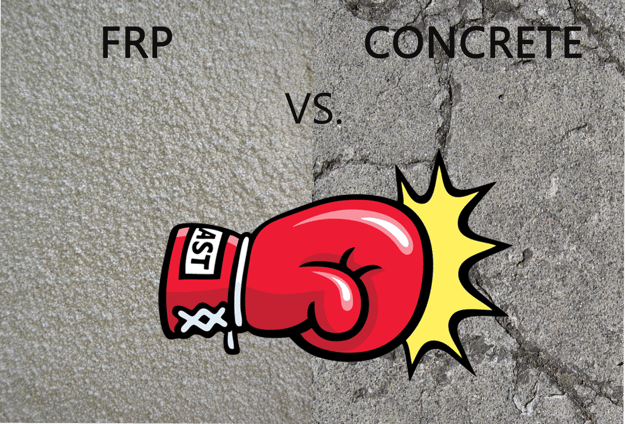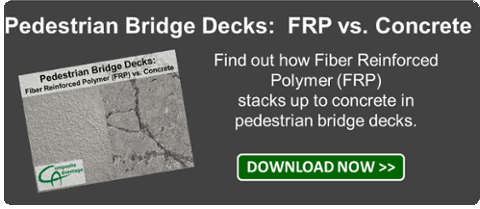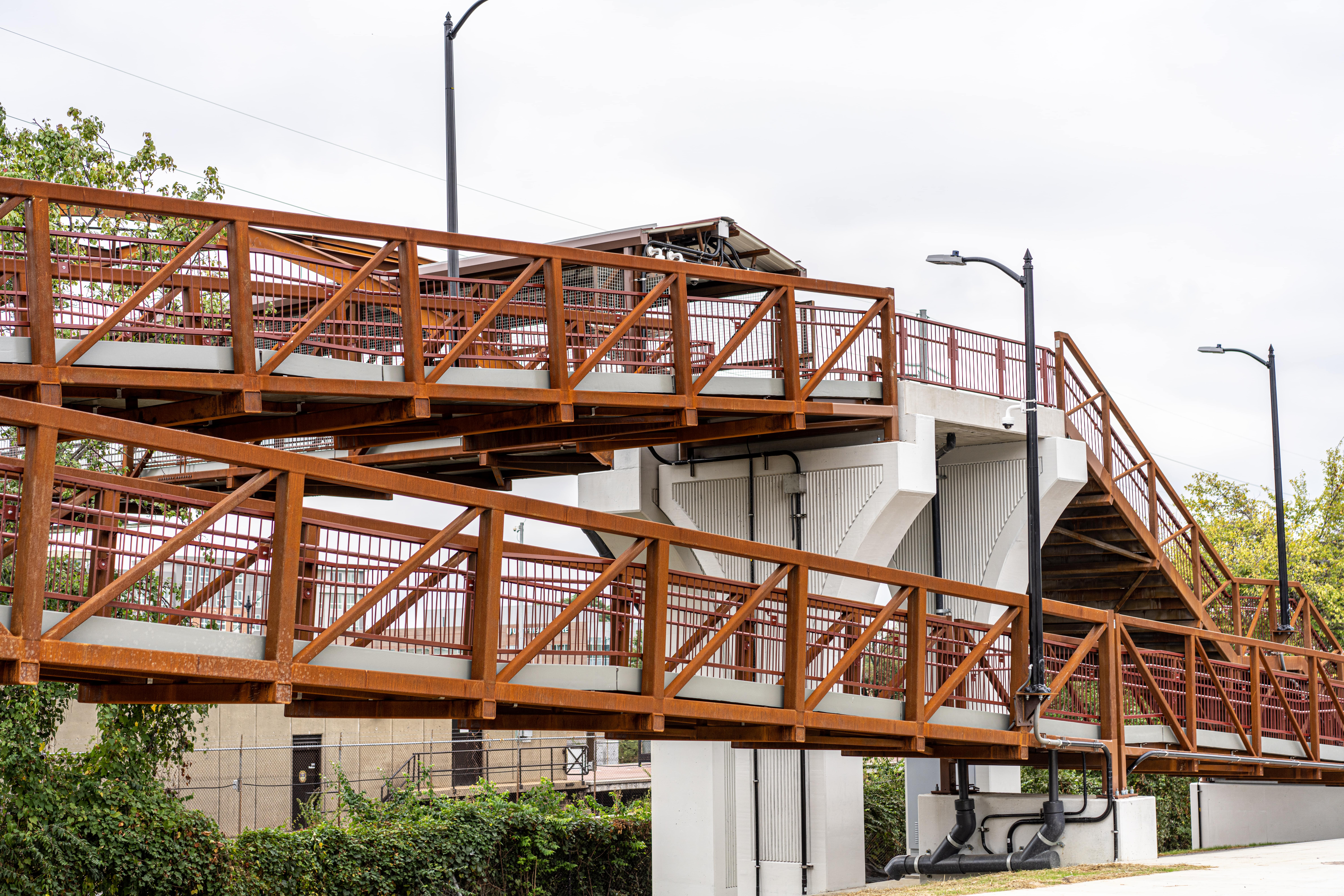
In the arena of bridge decks, concrete has reigned as the heavyweight favorite - and I do mean heavyweight. But the need for accelerated construction and zero maintenance, coupled with rising transportation costs, has put concrete in the ring with a lighter weight contender – Fiber Reinforced Polymer composites. If you compare the two materials, FRP is proving it can go the distance. Let’s take a look.
Created from two or more existing materials, FRP is a new polymer matrix material reinforced with fibers. The flexibility to mix the right combination of fiberglass fabric, core material and resin means FRP products can be tailored to the individual requirements of each bridge project. Functional features can also be incorporated into prefabricated FRP bridge deck systems. The following can be easily integrated on the manufacturing floor:
- Crowns
- Curbs
- Drainage scuppers with grating
- Railing attachments
- Expansion joint cover plates
- Curb covers
If you compare profiles, FRP’s lighter weight gives it several advantages over concrete. Adopters of this advanced material enjoy reduced substructure [concrete, ground connections], superstructure [arch and steel beams] and installation costs. And because a single tractor trailer can handle a larger number of the lightweight panels, transportation costs are reduced. That same tractor trailer can handle fewer precast concrete panels, leading to higher transportation fees.
Bridge deck panels constructed with FRP are easier and faster to install than concrete panels. Take the case of a truss bridge in Wolf Trap National Park. The truss – including steel, FRP deck and fencing – was assembled near the highway, eliminating the need for over-the-road deck installation. Within 15 minutes of road closure, light duty cranes lifted the FRP panels into place – the largest span weighing 132,000 lbs. Precast concrete would have weighed an additional 74,000 lbs. In addition, poured concrete takes 28 days to cure and precast concrete panels require the use of heavier duty equipment.
Concrete's broom finish wear surface requires regular upkeep. FRP’s polymer concrete’s quartz aggregate gives its wear surface the same friction and feel as a conventional broom finish. FRP comes in a wide range of color options, easily blending into any environment. It can also be pigmented to match the steel superstructure. Concrete is limited in choice of color. Maintenance is another area where FRP gives concrete a left hook. FRP’s non-slip, high-traffic polymer aggregate overlay has a life cycle of 15+ years without repair. Extreme damage can be patched. Concrete requires more frequent patch repairs for spalling and crack sealant.
In the final round, concrete might last anywhere from 15 to 50 years. Salt and coastal environments dictate more costly concrete products. Chemicals also shorten the life of a concrete product. FRP lasts more than 75 years, is resistant to water, salt, chemicals, hot and cold temperature extremes and variables found in coastal environments.
Blow by blow, it seems FRP is giving concrete a knock-out punch.

